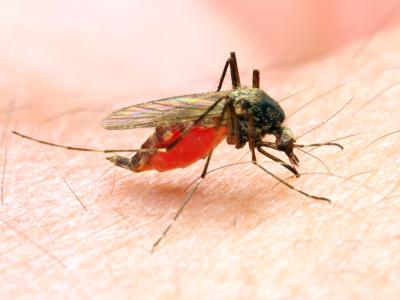A new Brazilian study adds further evidence to the link between Zika and microcephaly while ruling out for the first time an association between microcephaly and an important insecticide and between the condition and vaccines.
In a final report of the case-control study, which was published yesterday in The Lancet Infectious Diseases, investigators analyzed data on 91 babies born with microcephaly last year (the cases) and 173 babies born with no microcephaly (matched controls) in Recife, a city in northeastern Brazil that was hit hard by the virus in 2015 and 2016.
Last September the group published its preliminary results in the same journal, which at the time was the first published Zika case-control study assessing microcephaly, a condition of smaller-than-normal head and brain size and often brain abnormalities. That report included 32 babies born with microcephaly, of whom 13 (41%) had lab-confirmed Zika.
A third of microcephaly tied to Zika
In the new report, the authors highlight several birth conditions tied to Zika, most notably microcephaly. They found that 32 of the 91 cases (35%) involved a lab-confirmed Zika infection, compared with none in the control group. This translated to about a 73-times-higher risk of microcephaly in babies who had a Zika infection.
The group also noted that baby girls had a significantly higher rate of microcephaly: 67% of case-patients were female, compared with 49% of controls. A commentary published with the study suggests that reasons for this could include an increased risk of congenital defects in female fetuses exposed to Zika virus or an increased risk of miscarriage in infected male fetuses.
In addition to the microcephaly data, 69 (83%) of 83 cases with known birthweight were small for gestational age, compared with 8 (5%) of the 173 controls.
The researchers also reported some link between lab-confirmed Zika and cerebral abnormalities, but about half of the Zika-positive infants had no such defects. Ten (43%) of 23 Zika-infected babies had major cerebral abnormalities on computed tomography (CT) scan, compared with 11 (20%) of the 56 cases who tested negative for Zika. Among the 26 infants who had severe microcephaly, 19 (73%) were Zika-positive, 7 of whom had cerebral anomalies. (But 7 of these 19 cases—those involving stillbirth or newborn death—did not have CT imaging done.)
Among moderate microcephaly cases, 13 (20%) of 65 babies were Zika virus–positive and, of these, 3 (23%) of 13 had cerebral anomalies.
Insecticide, vaccines not factors
The scientists also assessed whether any other factors might be associated with microcephaly, including economic factors, maternal use of folic acid, maternal smoking, use of the insecticide pyriproxyfen, and maternal use of vaccines during pregnancy.
The latter two factors are especially notable because some have speculated they could be contributing factors to the rise of microcephaly in countries hit with Zika. Officials began treating water sources with pyriproxyfen in 2014 in Brazil to help control the mosquitoes that transmit Zika and related viruses.
None of these variables, however, was linked to higher microcephaly rates. The investigators looked at pyriproxyfen use in both water sources and elsewhere in the house, and they studied several vaccines administered during pregnancy, with by far the most common being the tetanus, diphtheria, and acellular pertussis (Tdap) vaccine.
'Enormous task at hand'
The authors also reported that 99 (57%) of the 173 mothers of control infants tested positive for Zika antibodies in their blood. That finding suggests that a high prevalence of Zika infection in northeast Brazil in early 2015 could have contributed to the subsequent rise in microcephaly, according to the commentary authors, two Brazilian experts who were not involved in the study.
Those experts write, "The authors should be commended for implementing this well designed case-control investigation and providing crucial evidence in the early stages of outbreak response and in this final report."
They add that several issues warrant more in-depth study, such as the degree to which the high rates of circulating Zika virus might have contributed to increased microcephaly in that part of Brazil.
They also mention the difficult task of microcephaly surveillance. They write, "Although the prevalence of infection in Brazil and the Americas might not have reached the levels observed in this study, there is an enormous task at hand to screen the large number of infants who could have acquired congenital Zika syndrome during the Zika virus pandemic and are now reaching age 2 years."
See also:
Dec 12 Lancet Infect Dis study
Dec 12 Lancet Infect Dis commentary
Sep 15, 2016, CIDRAP News story "Case-control study adds to Zika-microcephaly link"





















